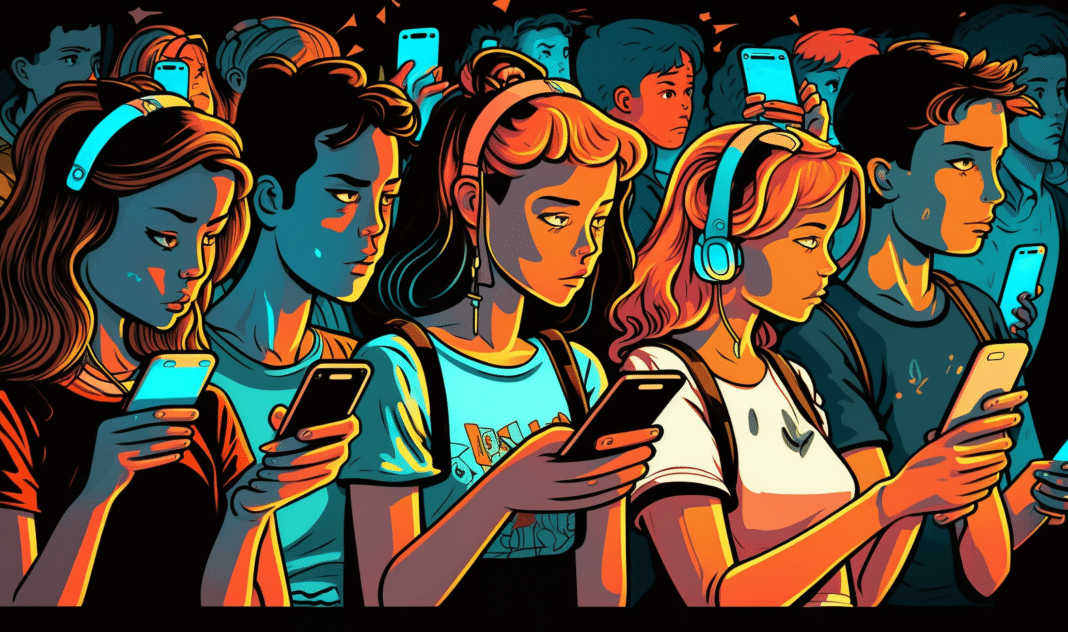US adults are set to spend more time watching digital video on platforms like Netflix, TikTok, and YouTube than traditional TV for the first time ever, according to a recent forecast by Insider Intelligence. The market tracker predicts that linear TV will account for less than half of daily viewing, falling to under three hours, while average daily digital video watching climbs to 52.3%, with an average of 3 hours and 11 minutes.
The shift towards digital video is being driven by people spending more and more time watching video on screens of all sizes, including connected TVs and smartphones. With teens preferring social and streaming video over TV, the trend is expected to continue to favor digital, according to Paul Verna, principal analyst at Insider Intelligence.
Netflix and YouTube are currently the two leaders when it comes to digital video audience attention, with US adults tuning in for an average of about 33 minutes daily on each platform. However, TikTok is quickly becoming a key driver, with the average time spent on the app daily by US adults rising sharply, according to Insider Intelligence.
Over the past five years, the rise of streaming services has caused major Hollywood studios to pull programming budgets from broadcast and cable channels and invest in their own streaming services. However, sports and news channels have remained profitable and have continued to generate strong cash flows from their linear businesses. Cable channels such as TNT, Syfy, and Comedy Central have reduced their budgets for everything from staffing to marketing, focusing their efforts on streaming. Channels like ESPN and Fox News have benefited from their ability to generate strong cash flows from their linear businesses.
However, there are early warning signs that the growth of news and sports channels is ending. For years, these channels have used rising carriage fees and advertising growth to offset cord-cutting. But with cord-cutting only growing and a tough ad environment, times may be changing. Last quarter, Fox Corp. saw its cable affiliate revenue decline on a yearly basis for the first time. Disney also saw a decline in U.S. cable revenue.
Executives in the sports world are beginning to grapple with the skyrocketing cost of sports rights, with similar implications. ESPN is going through challenging times due to the changing landscape of linear programming. Companies are pivoting streaming services to focus on profitability, making the fate of linear TV more uncertain. The linear business is in crisis, and the need to control costs is more urgent. In the end, streaming is inevitable, and while it isn’t all doom and gloom, the challenges will only grow starker.
“TikTok versus Netflix will be a major trend to watch this year,” said Insider Intelligence principal analyst Jasmine Enberg. “The lines between social and entertainment have blurred, and TikTok is now coming for the bigger-screen video players.”
While Twitter is not primarily a video platform, overall time spent on the platform by US adults is expected to drop this year and next year as its user base declines. “The problem is that Twitter’s efforts to encourage more original videos, from Vine to Fleets, have so far been unsuccessful,” said Enberg. “Twitter owner Elon Musk’s attempts to bring more video to the app, including potentially incentivizing YouTube creators to post to Twitter, will be futile at improving time spent among all US adults unless he also manages to stave off a user decline.”
The rise of digital video is also being fueled by the availability of live sporting events on video streaming platforms and the popularity of shared video clips on apps. The shift away from traditional TV is expected to continue, with more and more people opting to consume video content on digital platforms.




